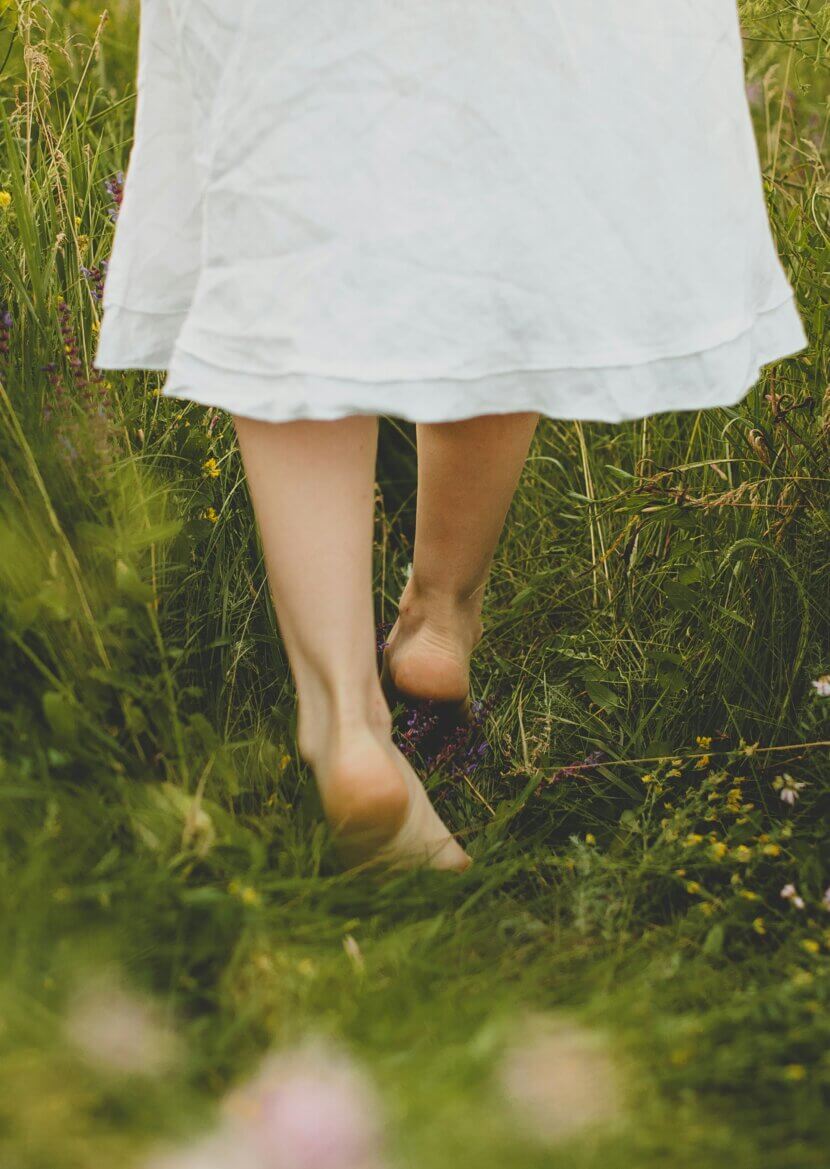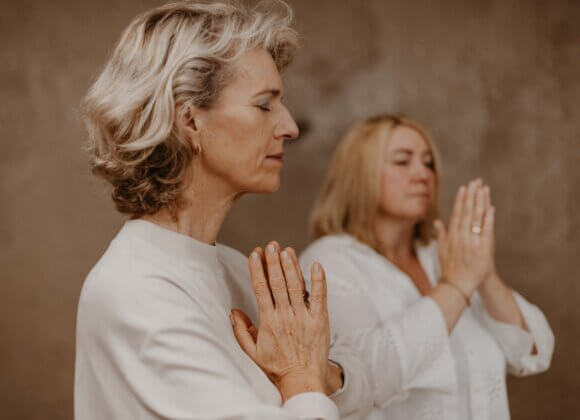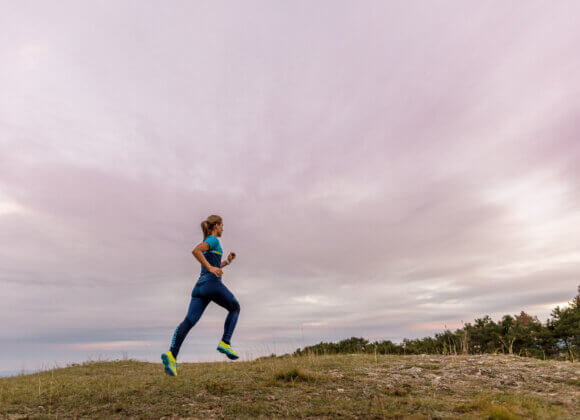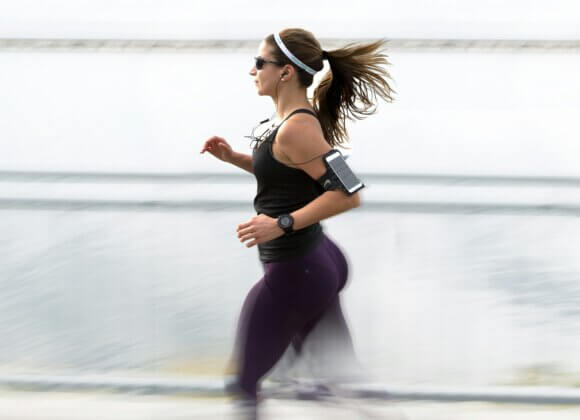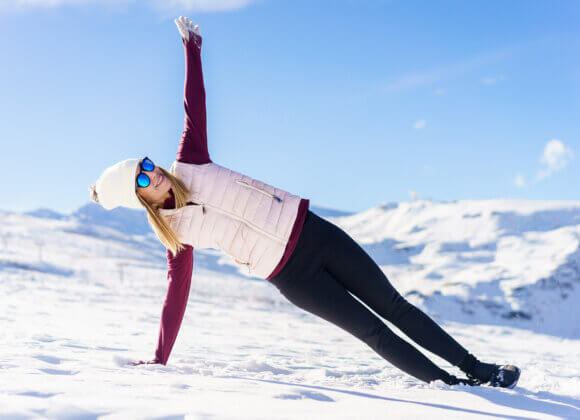Is walking barefoot really healthy or just hype with no effect? At the “European Ayurveda Resort Sonnhof” near Kufstein, Tyrol, the effects of walking without shoes – on the body, mind and energy system – have been studied intensively for years. Experts give an insight into their experiences and findings.
Walking barefoot over moss, meadows or forest floors is not just a sensual pleasure – it also has health benefits. Elisabeth Naschberger-Mauracher – founder, managing director and Ayurveda expert at the renowned “European Ayurveda Resort Sonnhof” – is convinced of this: “From an Ayurvedic perspective, walking barefoot promotes a direct connection with the earth, the so-called prithivi tattva. It reduces excess Vata, calms the nervous system and has a stabilizing and sensory harmonizing effect.”
The natural stimuli on the soles of the feet play a central role here: according to Ayurveda, they activate the marma points, i.e. energy centers, stimulate internal organs and strengthen blood circulation.
Scientifically sound – no esoteric effect
What has a millennia-old tradition in the Far Eastern healing arts can also be medically proven today. “Walking barefoot improves proprioceptive feedback – in other words, the sense of balance and position,” says Naschberger-Mauracher. “This activates muscle groups that often atrophy in shoes. This not only strengthens the foot and pelvic floor muscles, but also improves posture and joint loading.”
She firmly rejects doubts as to whether this is just a placebo effect: “Studies show stronger foot muscles, less knee pain, improved gait dynamics and even a lower heart rate when walking on natural ground.”
From the feet to the spine – the whole body benefits
“In European Ayurveda, we take a holistic view of people,” explains Naschberger-Mauracher. “Walking barefoot has an effect on many levels – from activating reflex zones in the feet and improving muscle coordination in the legs to naturally straightening the spine.” Circulation and the nervous system also experience harmonizing regulation through direct contact with the earth.
Walking barefoot is not suitable for everyone – who should be careful
As beneficial as walking barefoot can be, there are exceptions. Diabetics with polyneuropathy, for example, often feel injuries too late. The expert also advises caution in the case of severe obesity, acute heel spur complaints or neurological diseases with gait instability. “In such cases, we recommend starting with targeted foot therapy under medical supervision,” says Naschberger-Mauracher.
How to get started right – and what’s important
You should start slowly. 5 to 10 minutes a day on soft natural ground is enough to start with. “Mindfulness is much more important than duration,” says the Ayurveda expert. Conscious rolling, good breathing and breaks in case of overload are essential. A regular foot massage with warm oil can also support regeneration. Ayurvedic doctor Sharma Gaurav, medical director at Sonnhof, puts it this way: “Walking barefoot is not just a technique, but a path to greater body awareness. It starts with trust – in the ground, in the body, in yourself.”
Not every floor is suitable – nature instead of tiles
Soft forest ground, sand or a meadow are ideal for barefoot beginners. Hard terrain such as asphalt or tiles is too strenuous in the long term and offers too little sensory variety. Ayurveda doctor Dr Deepa Naik recommends: “Start with forest soil or sand – this activates gently and stabilizes without overstraining.” Indoor spaces can be an introduction, but are no substitute for experiencing nature with its changing stimuli.
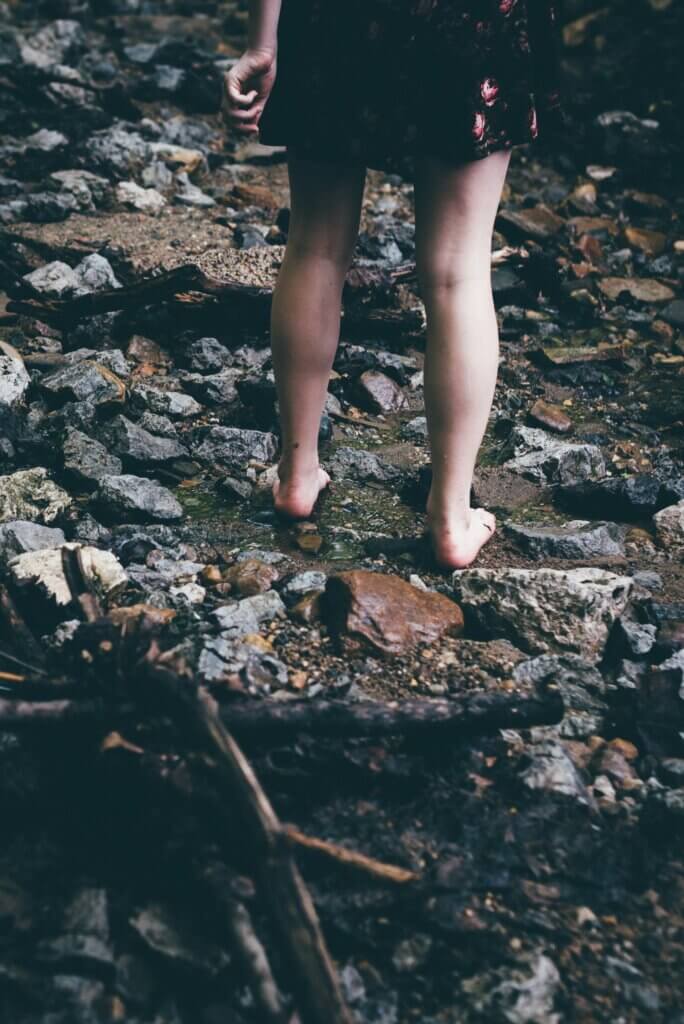
on a meadow or on sand.
Barefoot shoes – a good compromise for city dwellers
Barefoot shoes also have their place in European Ayurveda. “They protect against injuries, but allow the muscles to work,” explains Naschberger-Mauracher. For more sensitive constitutions – such as people with a pronounced Vata type – they are a good compromise. Nevertheless, it is important to walk regularly without shoes – for example in the garden or on a meadow.
Long-term effect – for posture, sleep and soul
Regular barefoot walking has a lasting effect on the body. The foot muscles are strengthened, the gait pattern becomes more natural and the risk of falling in old age is reduced. The skin adapts and becomes more resistant. “Psychologically, walking without shoes brings more grounding, more self-awareness and inner peace,” says Naschberger-Mauracher. In addition, regular barefoot walking improves vegetative functions such as sleep, digestion and stress resistance – all important pillars of longevity medicine.
What walking barefoot means for children
Walking barefoot is more than just healthy for children – it’s essential. “It supports coordination, balance, muscle development and sensory integration,” emphasizes Naschberger-Mauracher. ADHD tendencies can also be alleviated through more movement and grounding. The most important piece of advice: “Let your children out as often as possible – on safe, natural surfaces.”

Elisabeth Naschberger-Mauracher is the founder and owner of the “European Ayurveda Resort Sonnhof”, which specializes in Indian teachings according to European standards. In addition to meditation, yoga and the like, the resort is known for its medical expertise in the areas of longevity, detox cures, etc.
Website: https://sonnhof-ayurveda.at
Related posts:
Mindfulness at home: meditation and breathing exercises


